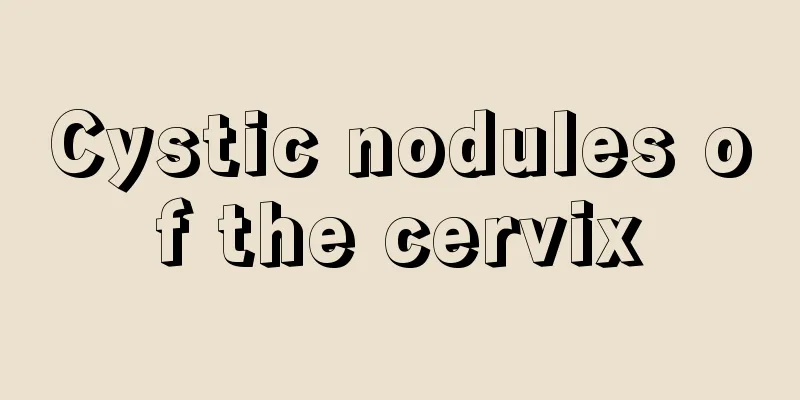Cystic nodules of the cervix

|
Cervical glandular cysts are located on the surface of the cervix and the lower part of the cervical canal. The mucus they secrete cannot be discharged, forming retention cysts of varying sizes. The mesonephric duct residual cyst of the cervix can occur on both sides of the cervix. The cyst wall is covered by a single layer of low columnar epithelium or cuboidal cells, and the inside is light yellow fluid. Cervical endometriosis cysts can be located on the surface of the cervix or deep in the cervix. Surface cysts may appear as purple-blue nodules, while deep cysts show periodic enlargement. Endometrial glands and stroma can be seen on the inner wall of the cyst, and the cyst contains concentrated old blood. Cervical adenosis is different from the endocervical glands of cervicitis. It is mostly located on the periphery of the cervix, close to the vaginal vault. In some cases, it is interconnected with vaginal adenosis. Cervical adenosis is an extension of vaginal adenosis. The characteristic of cervical adenosis is that the epithelium is low columnar and most of them have no secretory function. Cervical adenoma is a glandular structure. Cervical adenomas are mostly located under the mucosa of the lower segment of the cervical canal. The glands show local and regional dense proliferation, with little glandular stroma, irregular size and shape, low columnar epithelium, and contain mucus. Diagnostic points The symptoms may vary depending on the type of cystic disease, mainly including discharge, increased leucorrhea, prolonged menstruation, and bloody secretions after menstruation. Some cases may have no symptoms and are only discovered during gynecological examinations. Mesonephric duct cysts are unilateral or bilateral cysts containing clear yellowish fluid, mainly located on both sides of the cervix. Purple-blue nodules or cysts on the surface of the cervix help in the diagnosis of cervical endometriosis. B-ultrasound can help to show cervical cysts, but it still needs to be combined with pathological diagnosis. Treatment Overview Various physical methods are mainly used to treat various cystic lesions of the cervix, and mesonephric duct cysts require resection. |
<<: Can I eat longan while preparing for pregnancy?
>>: Inflammatory ovarian cysts
Recommend
What is partial hydatidiform mole?
If there is excessive proliferation of placental ...
How long after an MRI can I get pregnant?
During pregnancy, you can do an MRI or even a CT ...
[Light ≠ Thin] Does meeting the weight standard mean you are not fat? Not necessarily!
What's your idea of a handsome guy? When se...
Seven months pregnant, the stomach is tight and hard
I believe that many people who have experienced t...
Is it good to drink black soy milk for polycystic ovary?
Polycystic ovary syndrome may be the disease that...
Pain on the outside of the breast
Breasts are an important physical feature of wome...
How many days can a woman who has just given birth go out?
After giving birth, the mother has consumed a lot...
What kind of fabric should I choose for pajamas? How to wash and dry pajamas
With the improvement of living standards, modern p...
What to eat for pregnant women with Yin deficiency and internal heat
Generally speaking, the physical condition of Yin...
What should I do if my leucorrhea is yellow and there is blood after having sex?
Leucorrhea is a common secretion in every female ...
Why do people hate people when they are old? What should we do when people hate us when we are old?
Many parents will find that they had a good relat...
Girls often sweat hands and feet
The symptom of sweating hands and feet is very co...
Prevention measures for acute candidal vaginitis
Acute candidiasis vaginitis is a particularly ser...
No orgasm after having vaginal yeast infection?
Vaginitis candidiasis is a relatively common type...
Is it likely that the fetus will stop growing at four months?
Fetal arrest is a problem that every normal pregn...






![[Medical Q&A] Why are many breast cancers discovered in the late stages?](/upload/images/67eff8c88a1c3.webp)


